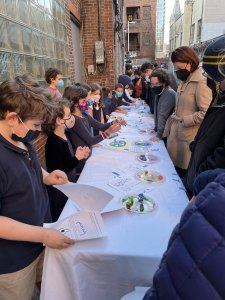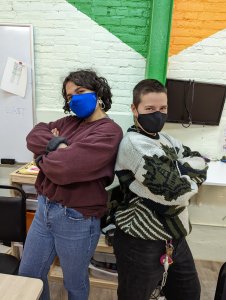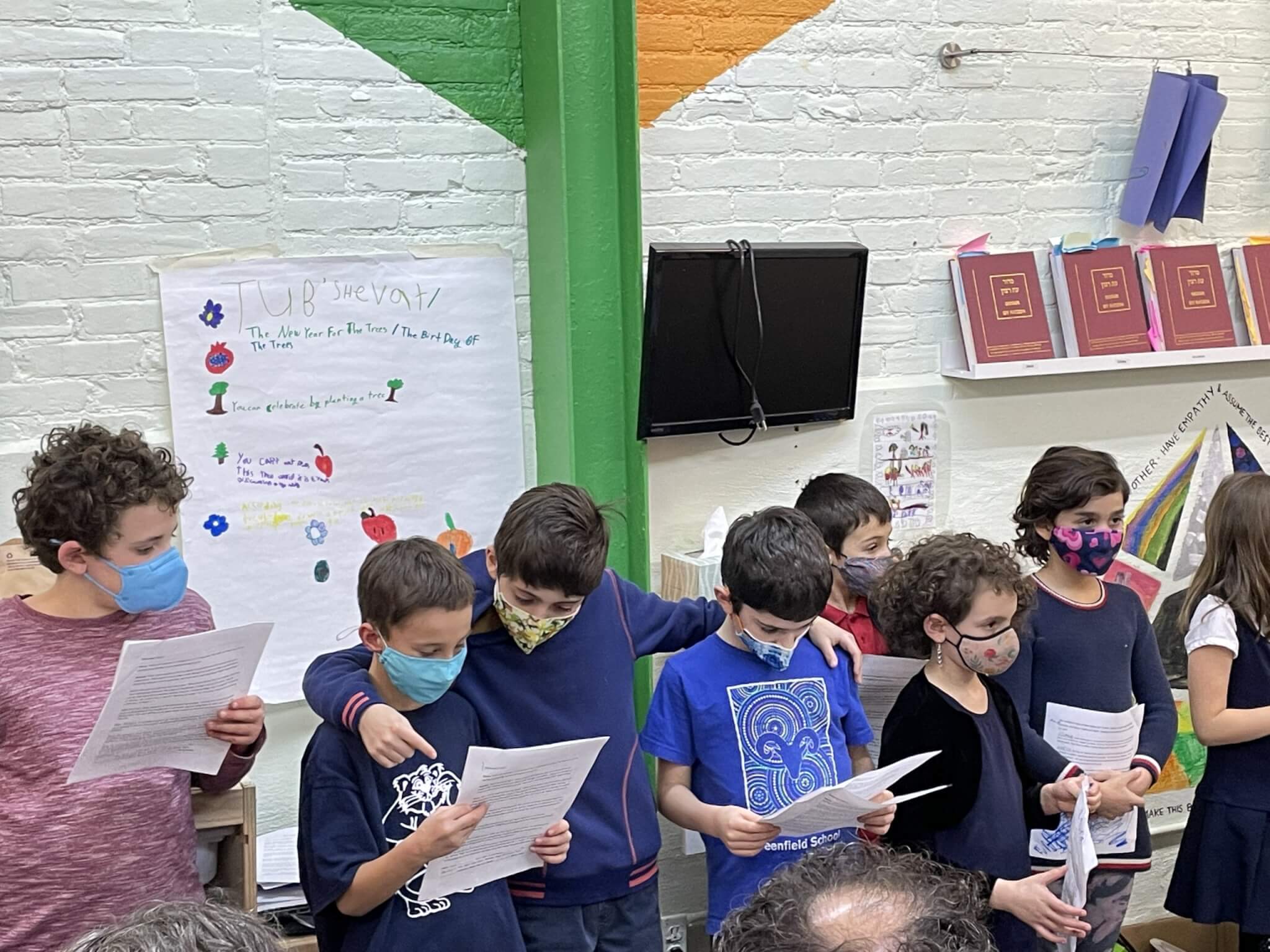
Nitzanim worked so hard during our second unit to create an open gallery showcasing their exploration! Learners were particularly inspired by the text that says:
Torah Temimah on Ecclesiastes 7:13 “When God created the first human, God took them and showed them all the trees of the Garden of Eden and said to them, ‘See my works, how beautiful and praiseworthy they are. And everything that I created, I created it for you. Be careful not to spoil or destroy my world – for if you do, there will be nobody after you to repair it.”
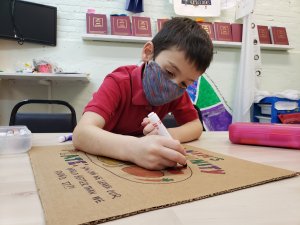
This fueled conversation on the concept of giving and receiving praise, noticing and appreciating the beauty in our world, and our obligation to take care of it. We believe that this text offers us an opportunity to pick up the work of creation where God left off, and we wanted to use sculpture and collage as modalities to explore that idea.
Our driving question for the unit was “how might we use ritual as a tool to examine the holiness inside ourselves that contributes to our communities?” To start answering this question, we wanted to define the key words “ritual, holy, and community”.
We defined holy as an adjective describing something special, or unique. It was hard to be more specific in our definition, but here are a few things Nitzanim describes as holy:
- Family
- Torah
- Inclusiveness
- Pie
- God
- Video Games
- Candy
- Grape Juice
- Community
- Mac and Cheese
- Being Alone
- Shabbat
- Fire
- Cats
- Doctors
- Our Younger Siblings
- Masks
- “Saying Hi”
We decided community means a group of people who live near, work with, or help each other. Our learners wrote an acrostic of the word that encapsulates our thoughts:
- Completely
- Open
- Making
- Macaroni
- United
- Nice
- Intelligent
- Together
- Inclusive
- Excellent
- Safe
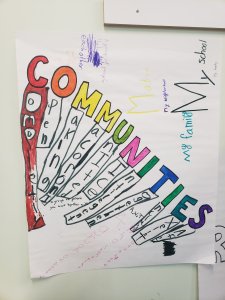
We defined ritual as something you do repeatedly, or a tradition, which means something to you and might connect you to your religion or spirituality. The most familiar ritual many of us have in common is lighting Shabbat candles!
This unit, we took time to learn about a ritual that was not familiar to everyone, a Tu Bish’vat Seder. Like on Passover, we drink four cups of grape-based beverage in a specific order and eat foods symbolizing various ideas and spiritual significances.
- With the first cup, we eat fruits and nuts which have a hard, inedible outside and a soft, edible inside. With this cup we consider times we might have judged a book by it’s cover, or felt judged in our own lives. We considered the difference between what others see outside and how we feel inside.
- With the second cup, we eat things that grow on trees which have a pit or large seed inside. With this cup we consider the small steps we took, or metaphorical seeds we planted, which became larger, or grew, over time. We considered the projects we currently love which started small, and the little things we do now which have the potential to grow even more!
- With the third cup, we eat things which are edible all the way through. With this cup we consider the times we feel whole and completely happy, or the conditions in which we could be truly and completely happy. Some of us considered moments we have already experienced, while others of us dreamed big about the world we want to see.
- With the fourth and final cup, we do not eat at all, but instead smell things like cedar and sage. With this cup, we consider the parts of this world that have a hidden beauty or an unexpected lesson to learn. We considered how we can practice noticing these parts of the world and their hidden beauty.
All of our reflections on these themes were channeled into art! Each learner made an oven-bake-clay sculpture representing their ideas about each of the four categories of fruits and nuts, either by creating a piece of food which falls into the category, or creating a representation of a more metaphorical idea. Then, each learner designed and crafted a seder plate which represents them and their holy inner light. Many of our plates are see through or translucent in some way, like a window into the soul.
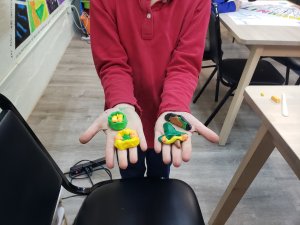
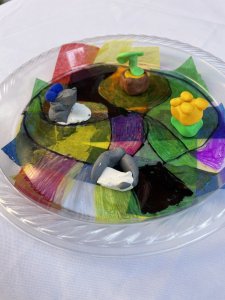

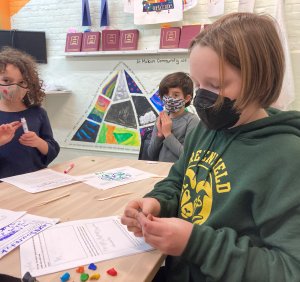
Finally, we created a “community plate” to illustrate how we have and will continue to make the places we go better than we found them. To prepare to make this piece, we discussed the role pollinators like bees and butterflies play in our ecosystem, helping plants and trees reach their fullest potential. We considered ways we have helped our friends, family, or peers reach their fullest potential:
- being a classroom helper
- helping a friend with schoolwork
- cleaning up in our area
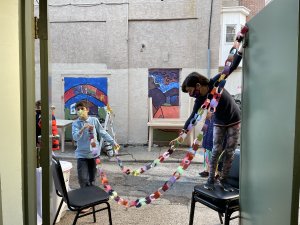
After all of Nitzanim’s grownups got to see the seder plates, sculptures, and informational posters developed by the learners, families sat together and collaborated on a final sculpture for the seder plates, representing the role each learner plays in their first community: their home! Some family creations included:
- A bed to represent a kiddo’s role as a source of comfort
- A giraffe eating a sunflower to represent taking care of nature
- Two hands holding a heart to represent taking care of one another
- A book connected by macaroni noodles to represent how a kiddo brings together generations
- A multicolored heart with each color representing a member of the family
- ……….And many more inspiring creations!
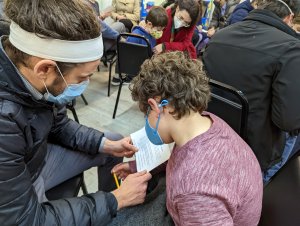
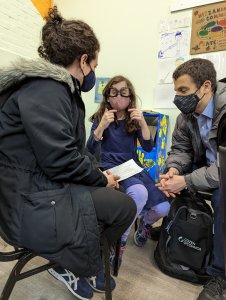
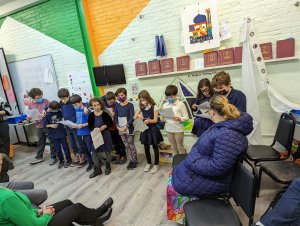
We had an amazing showcase, but most importantly, we learned so much about ourselves, each other, and the ways we can use that knowledge to strengthen our communities.
